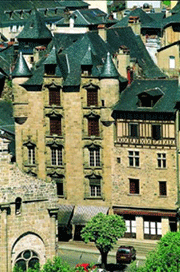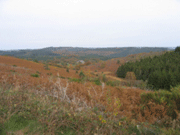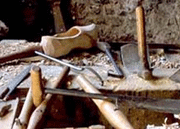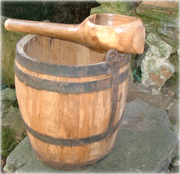A Family Chronicle


Pre-war Years
Maurice Fourches was born in 1930 in Tulle Corrèze. Monsieur Fourches carried out his higher education at the Faculty of Science at Clemont Ferrand. Maurice’s military service was spent for the most part in Algeria (1956-1957). By 1970 Maurice had worked his way up to be the head of schools in Haute Loire and then in Cantal. Retired in 1990 after 42 years of service he still plays a very active role in local life. Maurice is married to Kathleen, an English lady who has been part of his life for the last 50 years. Maurice’s memoirs “Mes Devoirs de Mémoire” has recently been published and provides a touching account of his life through often very difficult times. The book brings both a smile and a tear…
We have kindly been given permission to publish extracts from his book the first of which is below.The extract has been translated in to English by Maurice’s wife Kathleen.
I was born on the first of November 1930, the first day of the “month of the dead” as people call it in our region. I prefer the expression “he arrived with the chestnuts”. It is more poetical and far less sad… I nearly arrived on the road between Naves and Tulle, as my parents had respectfully gone to take the traditional pots of chrysanthemums to the family grave.
 Naves was then a small country village some six kilometres from Tulle, at the top of a stiff hill leading from the deep valley of the river Corrèze, where the chief town is situated, to the summit of the Tulle plateau, the first step at 400 to 600 metres altitude before the highlands of the Monédières and the plateau of Millevaches, at nearly a thousand metres altitude. (This name Millevaches, is perhaps derived from the ancient Gaul ‘melo’ a high place, a mountain and the Latin adjective ‘vacua’ meaning empty, abandoned).
Naves was then a small country village some six kilometres from Tulle, at the top of a stiff hill leading from the deep valley of the river Corrèze, where the chief town is situated, to the summit of the Tulle plateau, the first step at 400 to 600 metres altitude before the highlands of the Monédières and the plateau of Millevaches, at nearly a thousand metres altitude. (This name Millevaches, is perhaps derived from the ancient Gaul ‘melo’ a high place, a mountain and the Latin adjective ‘vacua’ meaning empty, abandoned).
 My maternal grandparents possessed a ‘bit of land’ in Naves, which allowed them to keep three cows, two pigs and a few sheep. They also grew rye and buckwheat, for bread and ‘tourtous’ (a sort of leavened pancake), potatoes and of course the usual vegetables grown in a kitchen garden. A few apple trees allowed them to brew a bit of cider, but my grandfather had another job; he made clogs. This had made a living for the parents and their four children. Their house was situated on the main square of the village, opposite the church. It was the traditional country house; the ground floor comprised the workshop and a living room with a big ingle-nook fireplace where they did the cooking.
My maternal grandparents possessed a ‘bit of land’ in Naves, which allowed them to keep three cows, two pigs and a few sheep. They also grew rye and buckwheat, for bread and ‘tourtous’ (a sort of leavened pancake), potatoes and of course the usual vegetables grown in a kitchen garden. A few apple trees allowed them to brew a bit of cider, but my grandfather had another job; he made clogs. This had made a living for the parents and their four children. Their house was situated on the main square of the village, opposite the church. It was the traditional country house; the ground floor comprised the workshop and a living room with a big ingle-nook fireplace where they did the cooking.
 The cowshed was at the other end of the village, near the cemetery. There was no water laid on in the house but a big ‘bassière’, a hollowed-out block of granite, stood in for a sink, where they put the buckets of water they drew from the public fountain. A ‘couade’, a sort of ladle with a hollow handle, was used to draw water from the buckets; you could also wash your hands or drink from the hollow handle like a spout. Upstairs there were two bedrooms and an attic in which were stored the cereals; this was the cause of nocturnal jigs when the cats chased mice. The planks the ceiling was composed of were badly jointed and dust would fall on the beds below during the little visitors’ incursions.
The cowshed was at the other end of the village, near the cemetery. There was no water laid on in the house but a big ‘bassière’, a hollowed-out block of granite, stood in for a sink, where they put the buckets of water they drew from the public fountain. A ‘couade’, a sort of ladle with a hollow handle, was used to draw water from the buckets; you could also wash your hands or drink from the hollow handle like a spout. Upstairs there were two bedrooms and an attic in which were stored the cereals; this was the cause of nocturnal jigs when the cats chased mice. The planks the ceiling was composed of were badly jointed and dust would fall on the beds below during the little visitors’ incursions.
It was quite mild, slightly misty, on this first of November, so my parents had decided to walk up to Naves; in fact, it was their sole means of transport because only my father owned a bicycle. The journey back was a hurried trip in the lorry of a kind cattle merchant. I doubtless made my final intra-uterine journey along a dirt track and amid the smells of sheep and pigs. My mother managed to hold on until Tulle.
***
My parents lived in a little flat on the first floor of an old house built mainly of clay and wattle, situated in the Trech, part of the old town, at number 5 Rue du Pas Roulant. The name was very appropriate because the narrow street leading to this neighbourhood climbed steeply up to the steps that led to the boulevard on which the Lycée Edmond Perrier is situated, opposite the Pra Limouzi. On each side of this narrow lane, at the top, were respectively a convent of Ursuline nuns and the Teacher Training College for Women. The latter was destroyed in June 1944 during the tragic events I shall later describe. The house belonged to my paternal grandparents, François Fourches and Léonie Bellardie. My grandfather was originally from Mougein, a tiny hamlet upstream from Tulle, and was one of the sons of a large family of tenant farmers. My grandmother came from Fressinges, another hamlet on the opposite bank of the river Corrèze, and was the great-great- granddaughter of François Bellardie, whose life and adventures were related par Martial Chaulanges in his trilogy “Les Mauvais Numéros”.
Extracts published with the kind permission of the publishers:
Lara
Avenue Charles-de-Gaulle
19300 Egletons
Tel: 05 55 93 18 88
E-mail: imprimerieducentre.lara@wanadoo.fr
ISBN: 2-914840-01-2
Share to: Facebook Twitter LinkedIn Email
More in banking, children, education, garden, history, schools, villages
By FrenchEntrée
Leave a reply
Your email address will not be published. Required fields are marked *



